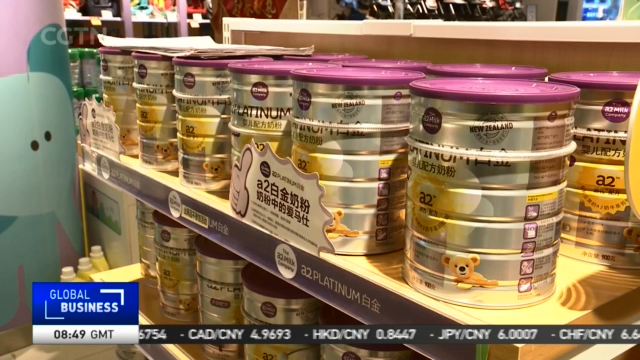
17:06, 28-Jun-2018
China Consumer Goods Market Rebounds: Analysts: Local brands continue to gain share over foreign brands
Updated
16:55, 01-Jul-2018
03:11

China's growing middle class continues to seek out high quality consumer goods, with value growth rebounding in 2017. That's according to the 2018 shopper's report by consulting firm Bain & Co and consumer panel research company Kantar Worldpanel. Wei Lynn Tang finds out more from the co-authors of this report.
Sophisticated, discerning, quality-yearning, from your shampoo to what you eat and drink.
China's market for fast-moving consumer goods rebounded in 2017 with a 4.3 percent annual increase in value growth, driven by rising average selling prices.
A welcome feat, according to a report by Bain & Co and Kantar Worldpanel. This is the first time in 6 years where sales grew faster than the previous year since these data were first tracked.
Will Chinese consumers continue to go premium?
BRUNO LANNES PARTNER, BAIN & COMPANY "Yes, the fundamentals are in place. There is clearly a strong economy, there is clearly the strategy of the government that wants to shift this economy from being dependent on the industrial output which is more driven by consumption and services and technology and so this is playing out. Urbanization, more people coming to cities, where they can spend where middle class do spend."
That said, the battle between local and foreign brands continues. Going premium may not necessarily give imported products a leg-up. In 2017, the share of local players grew almost 8 percent, while that of foreign brands--less than half a percent.
BRUNO LANNES PARTNER, BAIN & COMPANY "The dilemma for multinationals really is: can the benefit of their global scale, the fact that they are a multinational – can these really offset the national speed and innovation of local companies? The story so far has been no. In fact, the global scale doesn't seem to be a competitive advantage as it may have been in other markets around the world compared to the speed and innovation rate of Chinese companies."
Lannes says multinationals will have to transform their operating model to fight back. This includes speeding up decision making, and having a local research and development presence to put out more customized products for Chinese consumers. That said, it's not all doom and gloom for foreign players.
JASON YU GENERAL MANAGER, KANTAR WORLD PANEL GREATER CHINA "There's still a lot of potential for imported brands to grow in China partly because of tariff advantages and also partly because Chinese consumers appetite for more imported brands and a lot of them are niche brands. I won't say that one trend will necessarily beat the other. We do think that on one hand, Chinese consumer wants imported brands for their skincare but in terms of food and beverage local brands still play a majority part of the market."
Jason says the Chinese market is big enough for more players to compete in.
Be that as it may, one thing is for sure: brands have to constantly keep up and innovate, not only to survive, but thrive, in a fast-changing urban market. WLT, CGTN, Beijing.

SITEMAP
Copyright © 2018 CGTN. Beijing ICP prepared NO.16065310-3
Copyright © 2018 CGTN. Beijing ICP prepared NO.16065310-3